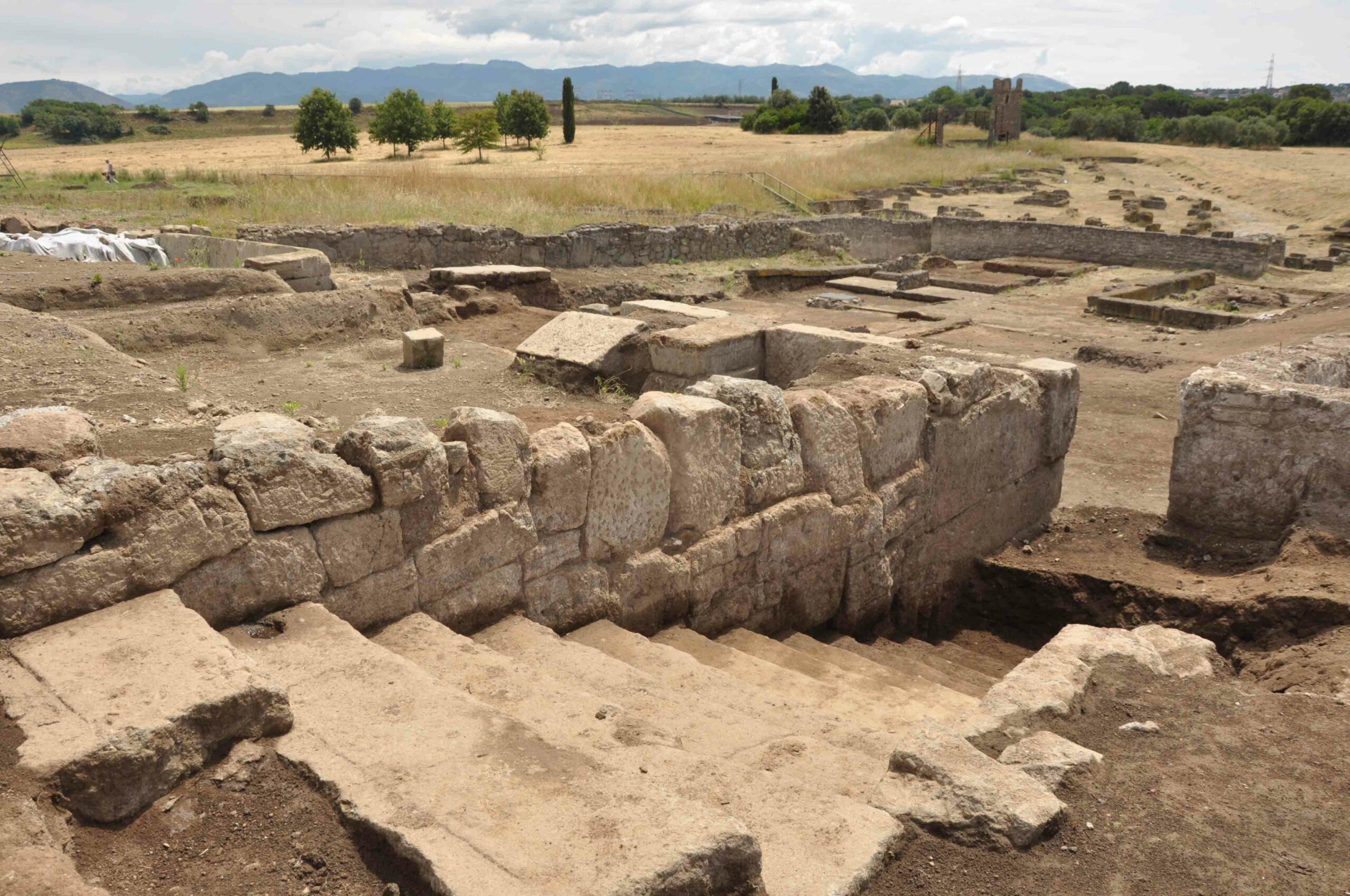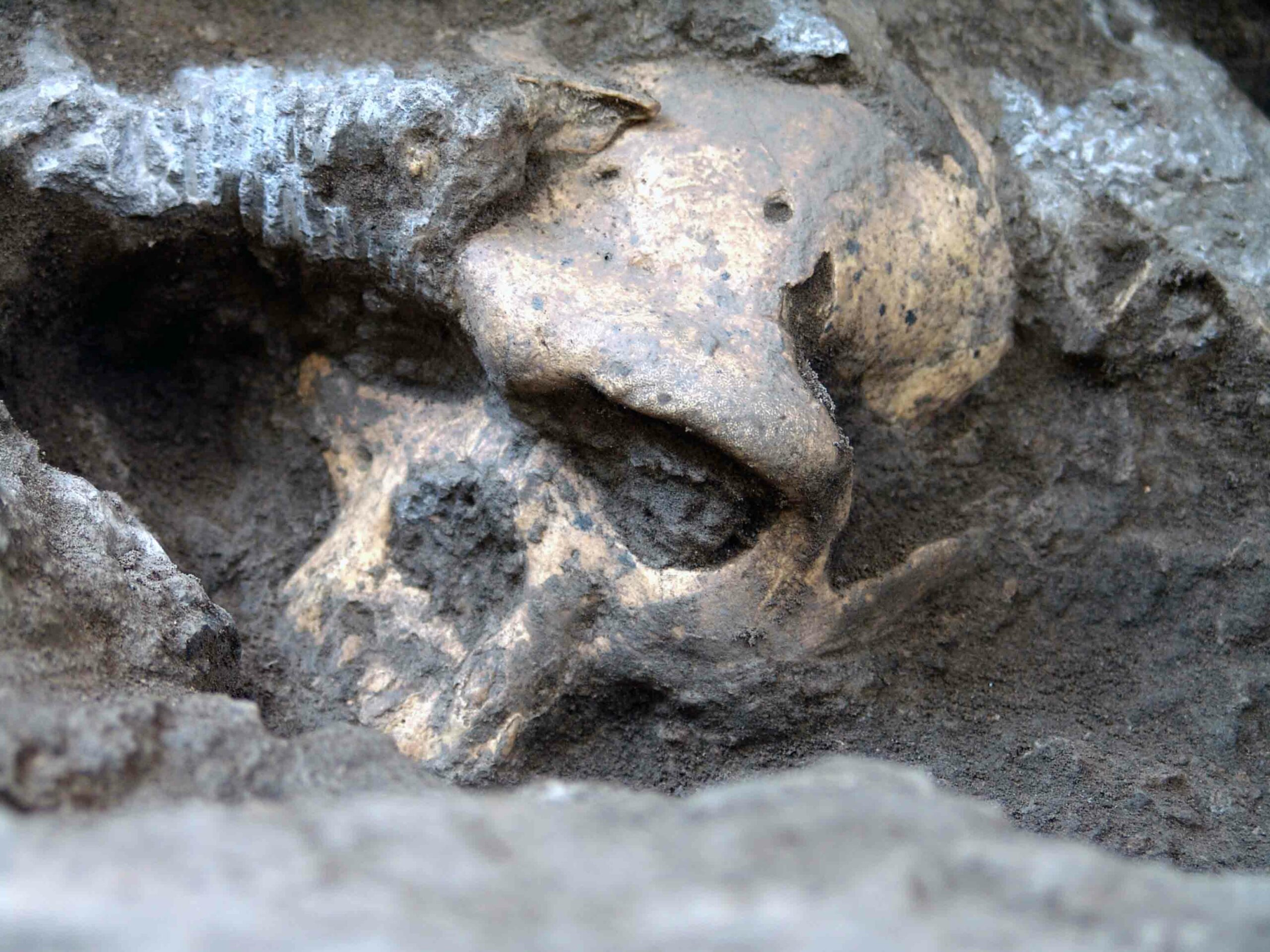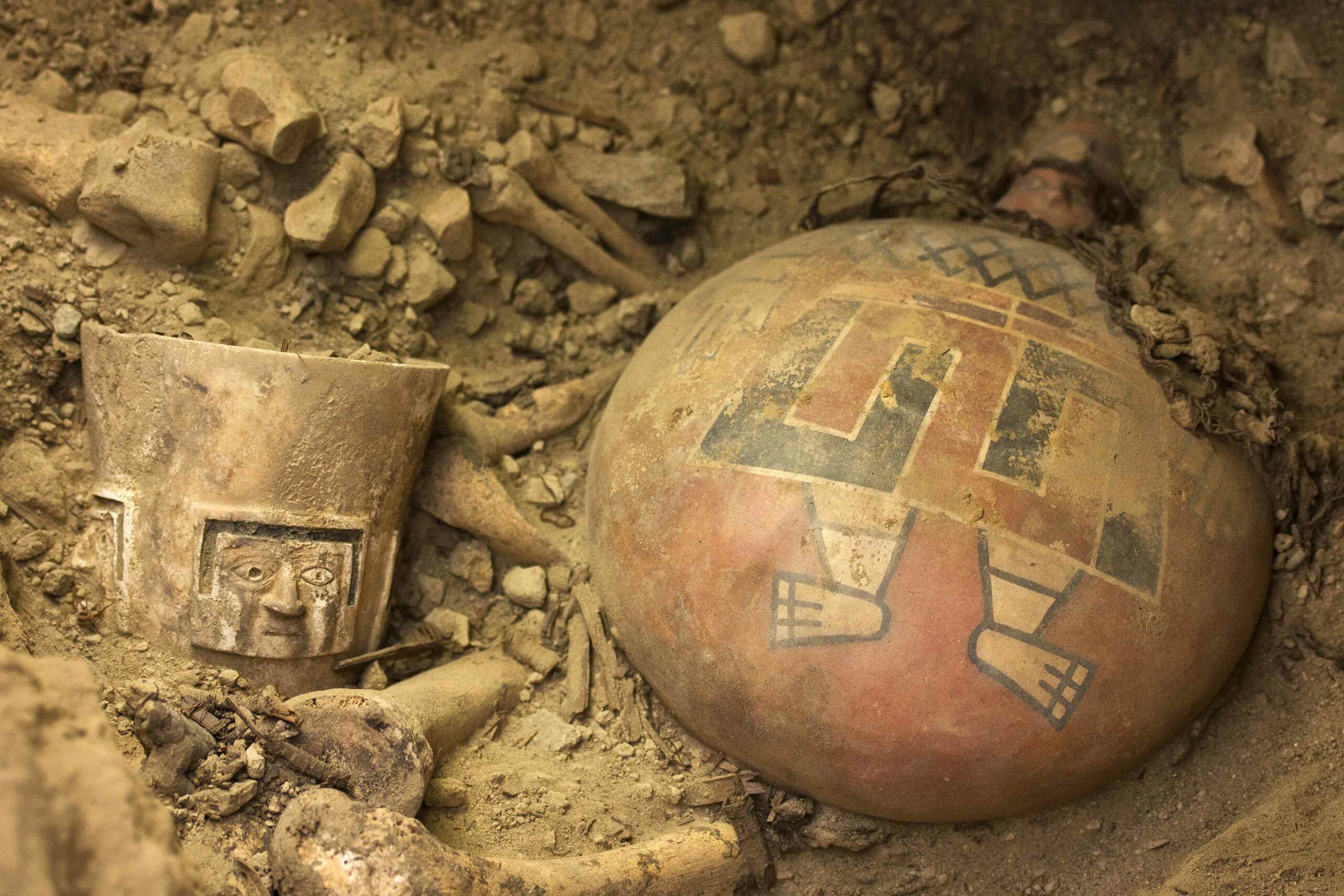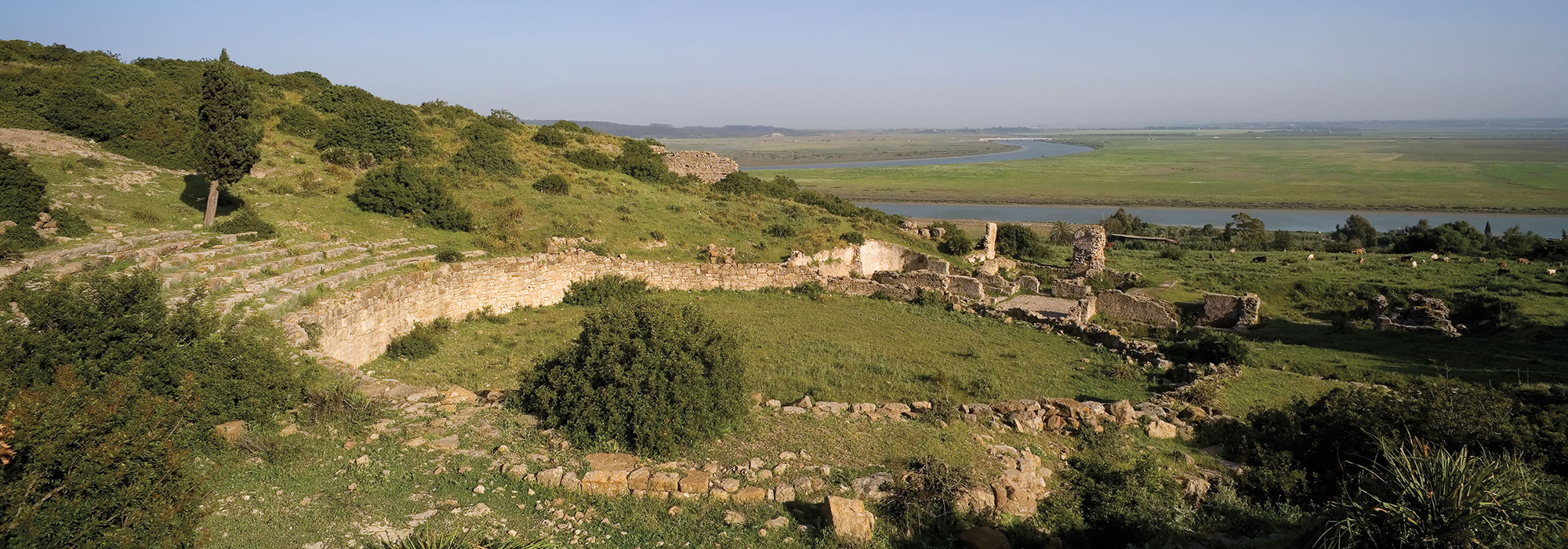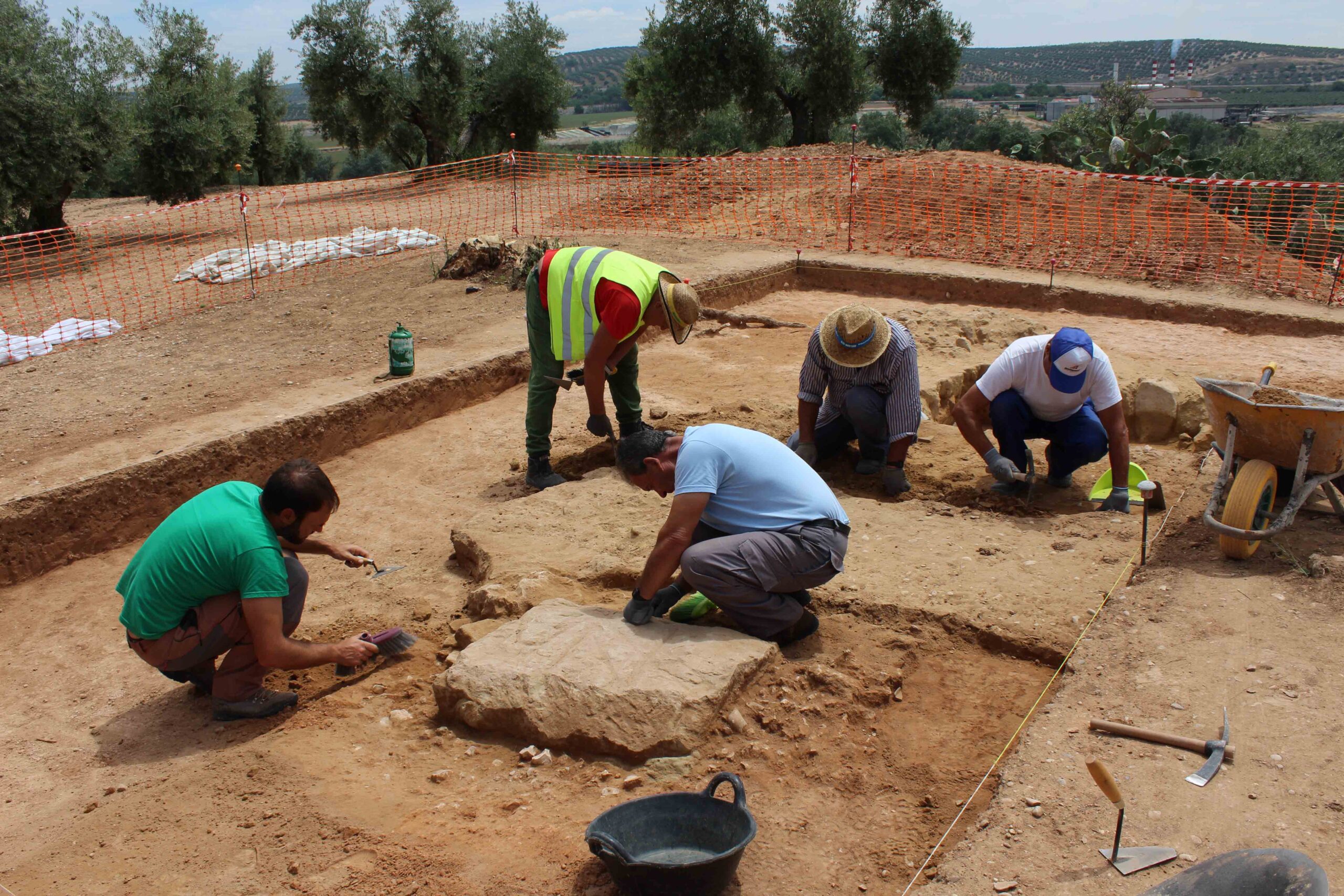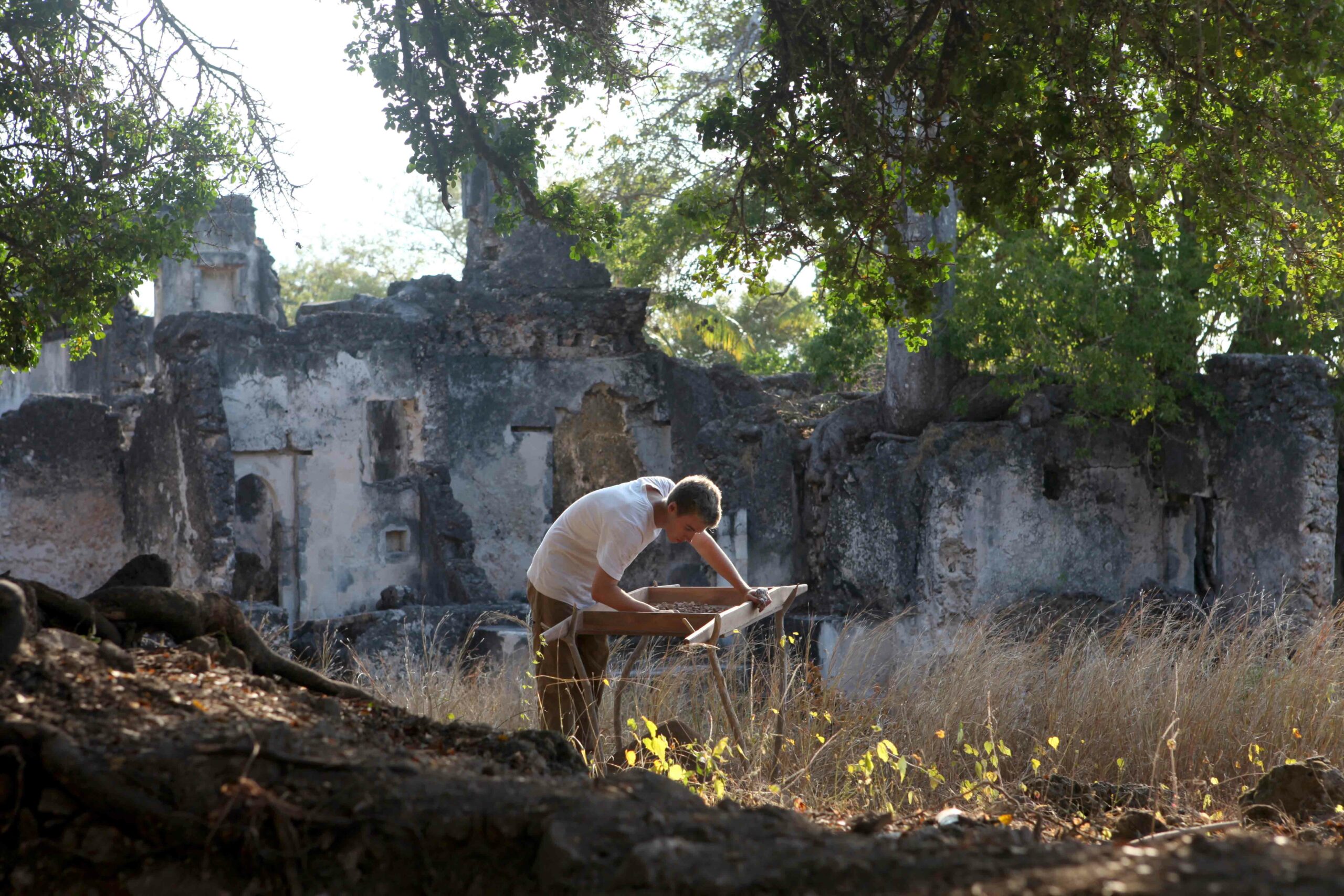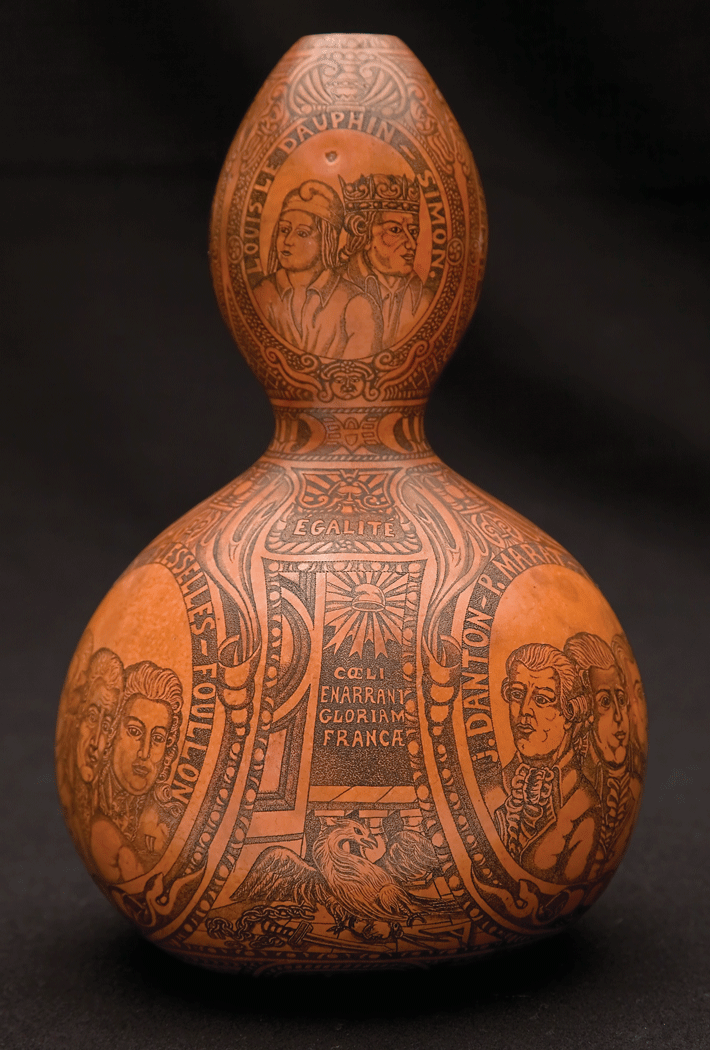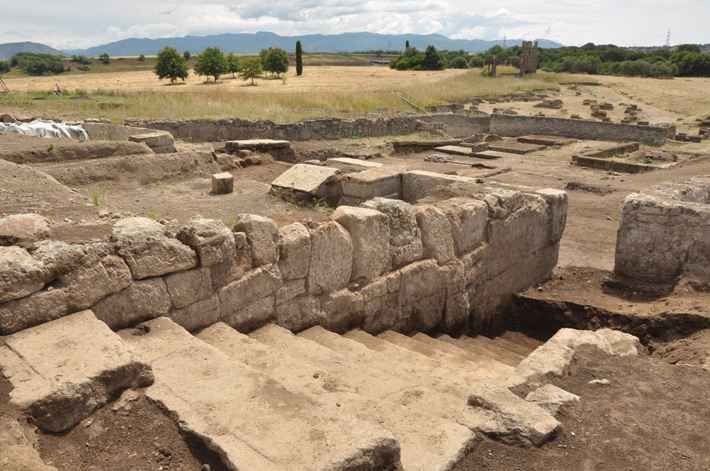
Eleven miles east of Rome, in the ancient city of Gabii, archaeologists unearthed a building complex that may represent the earliest instance of Roman monumental architecture. This enormous structure, dating to the fourth or third century B.C., was excavated by a team from the University of Michigan and predates most of the grand monuments of Rome itself. The large stone–block construction sprawls across three man-made terraces, enveloping a space of more than 22,000 square feet—roughly an entire ancient city block. The exceptional design features colonnades, geometrically patterned floors, wall paintings, and a grand staircase.
Because the site has not yet been fully excavated, it remains to be determined whether this complex served a public or private function. Regardless of the outcome, according to Marcello Mogetta, managing director of the Gabii Project, this structure is unprecedented within the archaeology of the Roman Republic—a period traditionally esteemed for its rejection of opulence and grandeur. If the complex is a private residence, its sheer size makes it unlike any contemporary aristocratic Roman house in Italy, and larger than even those of Pompeii and Rome.
“If the interpretation as a public building were confirmed, we would be moving into uncharted territory,” says Mogetta, adding that political buildings of the time were still being built with wooden posts and perishable materials. “The Gabii structure would provide a much earlier example of the desire for monumental architecture in a civic context.”


